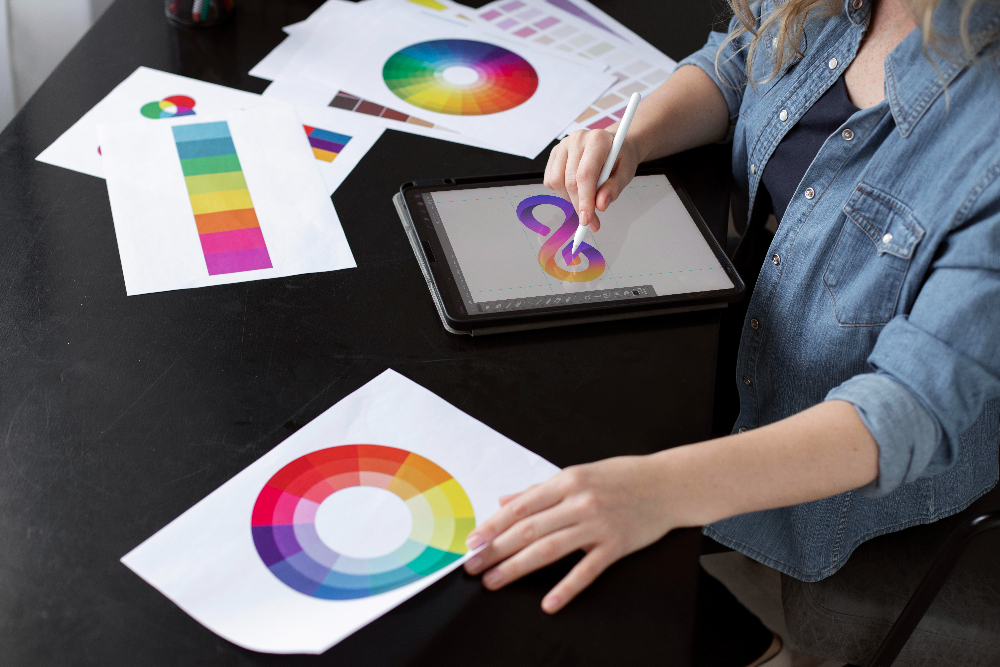
The evolution of marketing from traditional print media to digital platforms marks a transformative journey that continues to redefine how businesses connect with their audiences. While print marketing once dominated the advertising landscape, the rise of digital media has brought new opportunities for engagement, personalization, and efficiency. This article explores the shift from print to pixels, examining how modern marketing strategies are adapting to an increasingly digital world.
The Decline of Traditional Print Marketing Print marketing, including newspapers, magazines, brochures, and direct mail, was the cornerstone of advertising for decades. While it remains relevant in specific niches, its influence has waned due to several factors: Declining Readership: With the proliferation of smartphones and the internet, consumers now prefer accessing news and content online. Cost Efficiency: Digital campaigns often cost less than print, offering better ROI and easier scalability. Measurability: Unlike digital marketing, print campaigns provide limited data on performance, making it harder to track effectiveness. Despite these challenges, print marketing still plays a vital role in industries where tangible materials and local outreach are crucial, such as real estate, luxury goods, and event promotions.
The Rise of Digital Marketing Digital marketing—encompassing social media, search engine optimization (SEO), email campaigns, and more—has become the dominant force in advertising. Its advantages include: Real-Time Analytics: Marketers can track clicks, impressions, and conversions in real time, enabling data-driven decisions. Personalization: Digital platforms allow for hyper-targeted campaigns tailored to individual user preferences. Global Reach: Businesses can reach audiences across the globe with minimal investment compared to traditional media.
Bridging the Gap: Integrating Print and Digital While digital marketing dominates, the most successful campaigns often integrate print and digital elements. Combining the two creates a cohesive strategy that leverages the strengths of both mediums. Here are a few ways businesses are merging print and digital: Print with QR Codes: Adding QR codes to brochures, posters, and business cards allows customers to seamlessly transition from physical materials to digital platforms. Augmented Reality (AR): Print ads can incorporate AR technology, enabling users to scan printed materials with their smartphones to access interactive digital content. Personalized Direct Mail: By using data analytics, businesses can create customized mail campaigns that drive recipients to online landing pages or exclusive digital offers.
Key Trends in Evolving Marketing Strategies: The transition from print to pixels has ushered in several innovative trends shaping the future of marketing:
1. Content Marketing: High-quality, engaging content remains at the heart of successful marketing. Blogs, videos, and infographics dominate digital platforms, while print materials like whitepapers and branded magazines provide complementary in-depth content.
2. Social Media Integration: Social media platforms have become essential marketing tools. Businesses use these channels for real-time engagement, storytelling, and customer service. Print materials often direct customers to follow social media accounts, creating a feedback loop between print and digital.
3. Data-Driven Marketing: Advanced analytics and AI-powered tools enable marketers to understand their audience deeply. From predicting customer behavior to optimizing ad spend, data-driven insights are central to modern strategies.
4. Sustainability and Eco-Friendly Practices: As consumers become more environmentally conscious, marketers are adopting sustainable practices. Digital campaigns reduce paper waste, while eco-friendly print options, like recycled paper and soy-based inks, appeal to socially responsible audiences.
5. Voice Search and AI Assistants: The rise of voice search and AI assistants like Alexa and Google Assistant is changing how businesses approach SEO and content creation. Brands are optimizing their digital presence to capture these growing audiences.
Challenges and Opportunities: The transition from print to digital marketing presents unique challenges. Businesses must navigate: Ad Fatigue: With the flood of digital ads, consumers are becoming more selective about what they engage with.
Privacy Concerns: As data collection becomes integral to digital marketing, businesses must prioritize user privacy and comply with regulations like GDPR and CCPA.
Consistency Across Channels: Creating a unified brand message across print and digital platforms requires careful planning and execution. However, these challenges also offer opportunities to innovate. For example, brands can stand out by crafting highly personalized experiences or leveraging emerging technologies like blockchain for transparent advertising.
The Future of Marketing: A Harmonized Approach As marketing strategies continue to evolve, the future lies in harmonizing print and digital efforts. Rather than viewing them as separate entities, businesses should focus on creating integrated campaigns that deliver consistent, impactful messages across all channels.
For example, a fashion brand might launch a new collection with a blend of glossy print catalogs, interactive social media posts, and an augmented reality app that allows users to virtually try on outfits. By combining the tangible allure of print with the dynamic reach of digital, such campaigns maximize engagement and ROI.
ConclusionThe shift from print to pixels represents not just a technological evolution but a fundamental change in how businesses connect with their audiences. By embracing both traditional and digital mediums, marketers can create versatile strategies that adapt to changing consumer behaviors and preferences. In this dynamic landscape, the key to success lies in innovation, adaptability, and a commitment to delivering value across all platforms.


We value your privacy—your email address won’t be shared